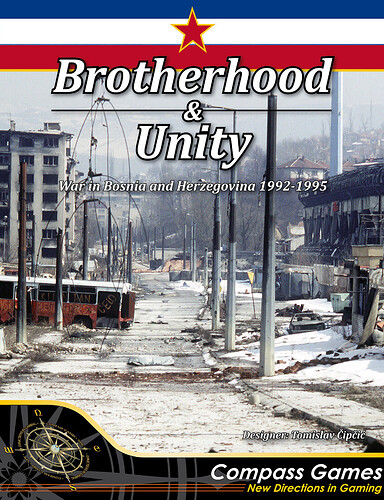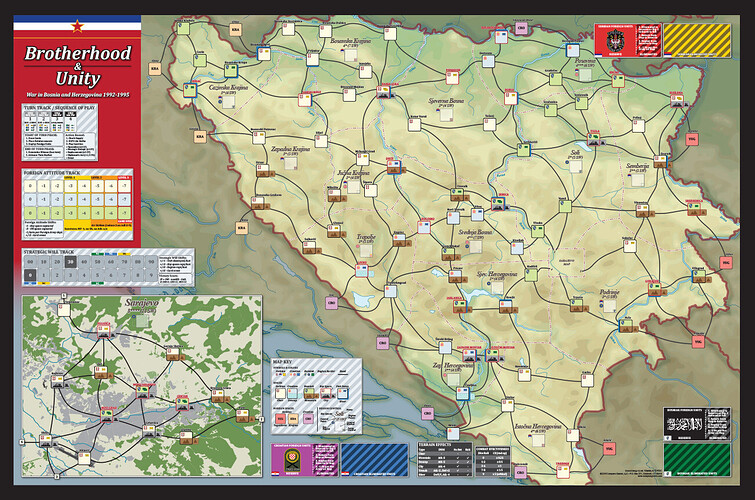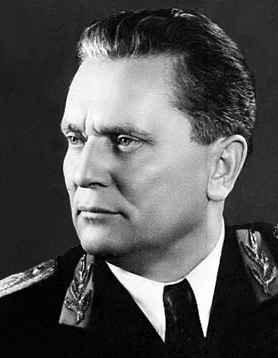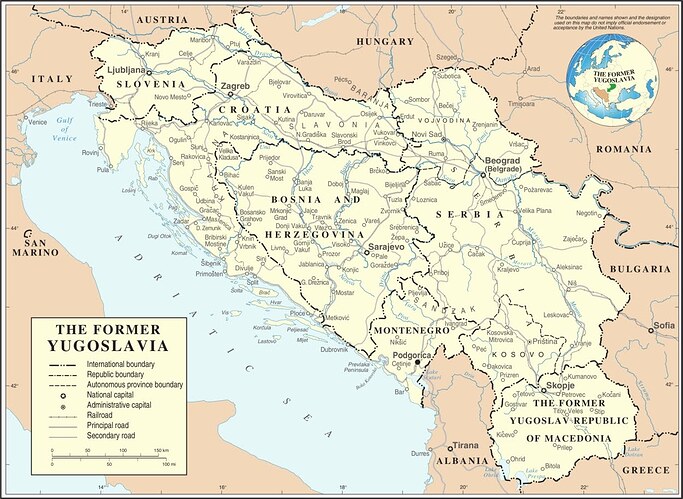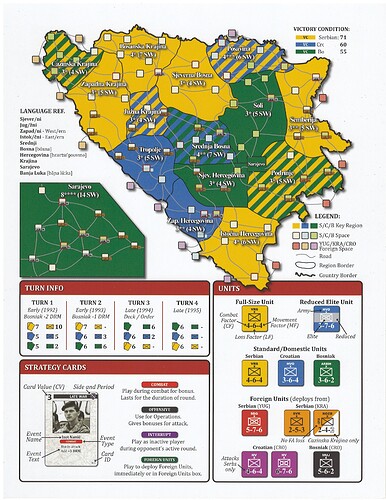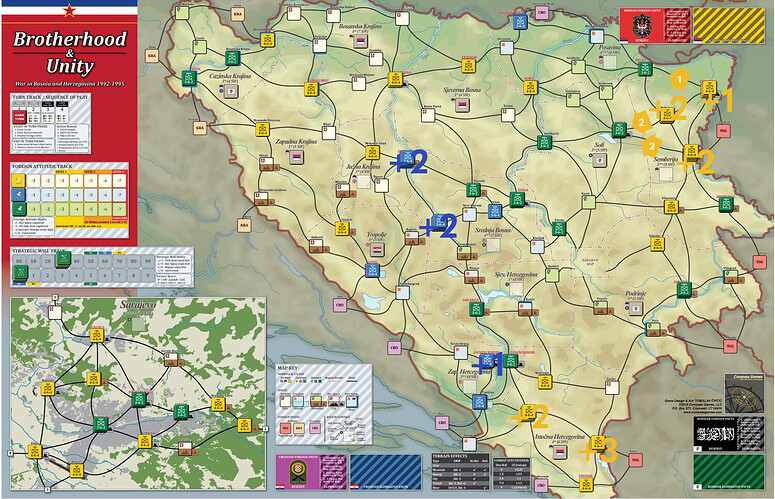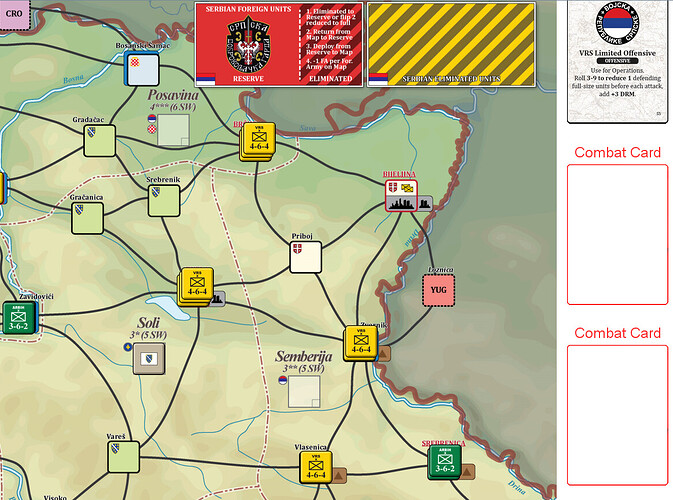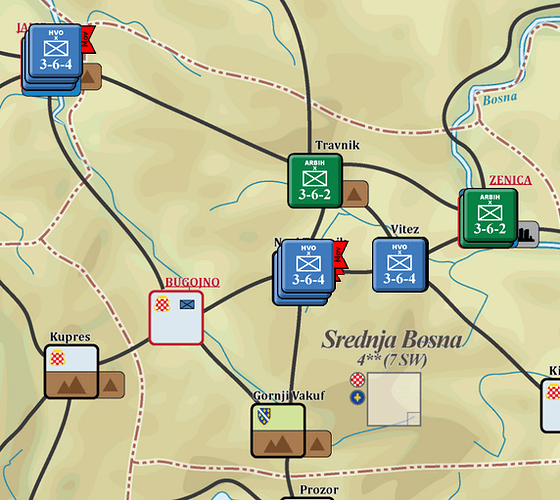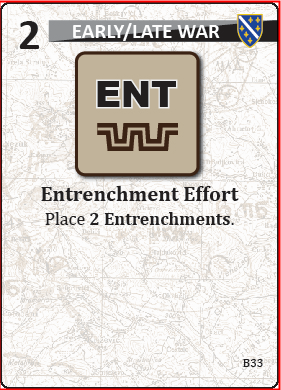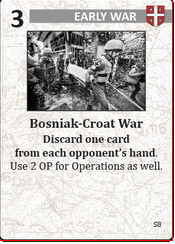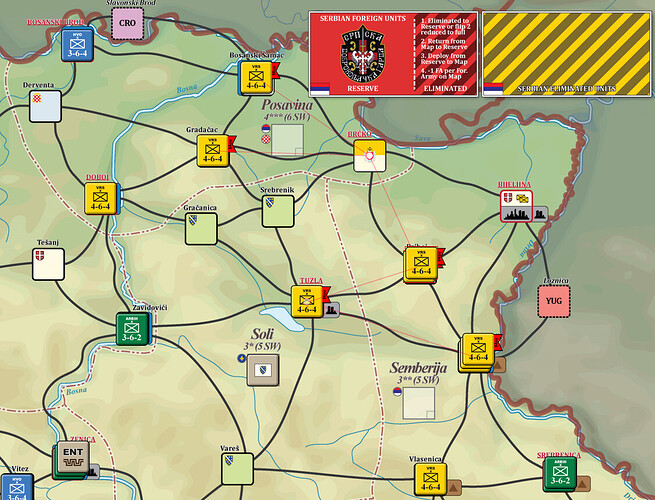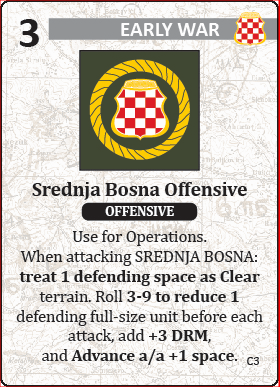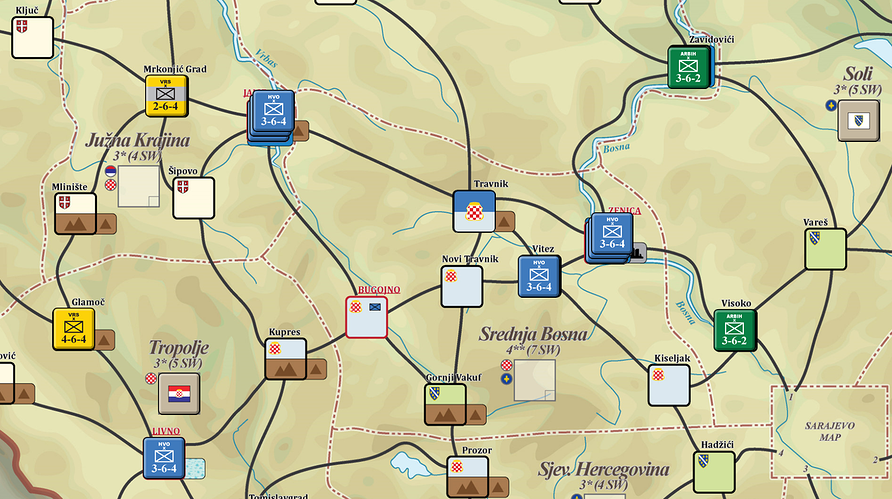The game starts with everyone placing reinforcements. While this sounds quite egalitarian, the reality is very different: the Bosniaks get 2, the Croats get 5, and ten Serbs get 10. Ten! The Serbs place first, so that at least the others can react. Due to the limitations on placing reinforcements, the Serbs could not directly threaten Srebrenica or Gorazde with their placements, so Pat instead split his between the very far south, and the northeast corner. I reinforced Srebrenica and Gorazde because, as far as I’m concerned, losing those would be an existential blow. There isn’t much I can do to help the boys up in Posavina.
Next is cardplay. Pat plays this:
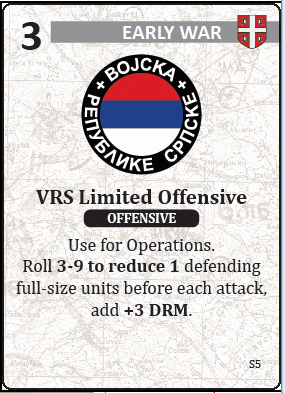
This will allow him to “soften up” the target of each of his attacks this turn, as well as get a +3 modifier in combat. It’s a “3” card, so he activates three spaces for attack, which just happen to be the three spaces in the northeast that he reinforced.
The Serbs’ first attack is against Brcko from Bijeljina (arrow #1). He rolls and successfully flips my single defending 3-6-2, which becomes a reduced 2-6-2.
I get to roll in combat as the defender, but my 2-6-2 has no chance of hurting his 4-6-4 units as I would need to inflict at least 6 points of “damage” and my combat factor is only 2, meaning I’d need a 3x modifier. The best I could do would be to roll a 9 and thus get a “critical” 2x modifier. But on the first turn, Bosniak unpreparedness gets them a -2 die roll modifier. So the best I could do would be a 9 -2 =7, which is just a 1x. Like I said, a lost cause.
Pat rolls a 4 which is modified to 7 (with his limited offensive drm) and thus his multiplier is 1x. He attacked with three 4-6-4 brigades, and thus 12 CF. I have to take a loss number of 12. Even if I hadn’t been reduced, this would have eliminated me, but now I have a single reduced unit with a loss factor of 6. It dies, and all three brigades advance into Brcko.
The Tuzla attack is against two 3-6-2 defenders, and into a city, but Pat again manages to reduce one of my units (rolls an 8) and thus I am left with a reduced 2-6-2 and a full-strength 3-6-2. I roll a 10, which is actually a 0 in this game, and thus do no damage again.
Pat rolls a 4 for his attack, +3 for his limited offensive, but -4 for the city. That comes out to a 3, which is still a 1x. He attacked with five 4-6-4 brigades so he had 20 CF. I flip my full-strength defender to satisfy 6 points, eliminate the new-reduced unit for another 6 points, and eliminate the previously reduced defender for 6 more points. That’s only 18. So the space is wiped out and three Serb brigades advance. That’s the end of the first Serb round, and it’s over to the Croats.
However …
